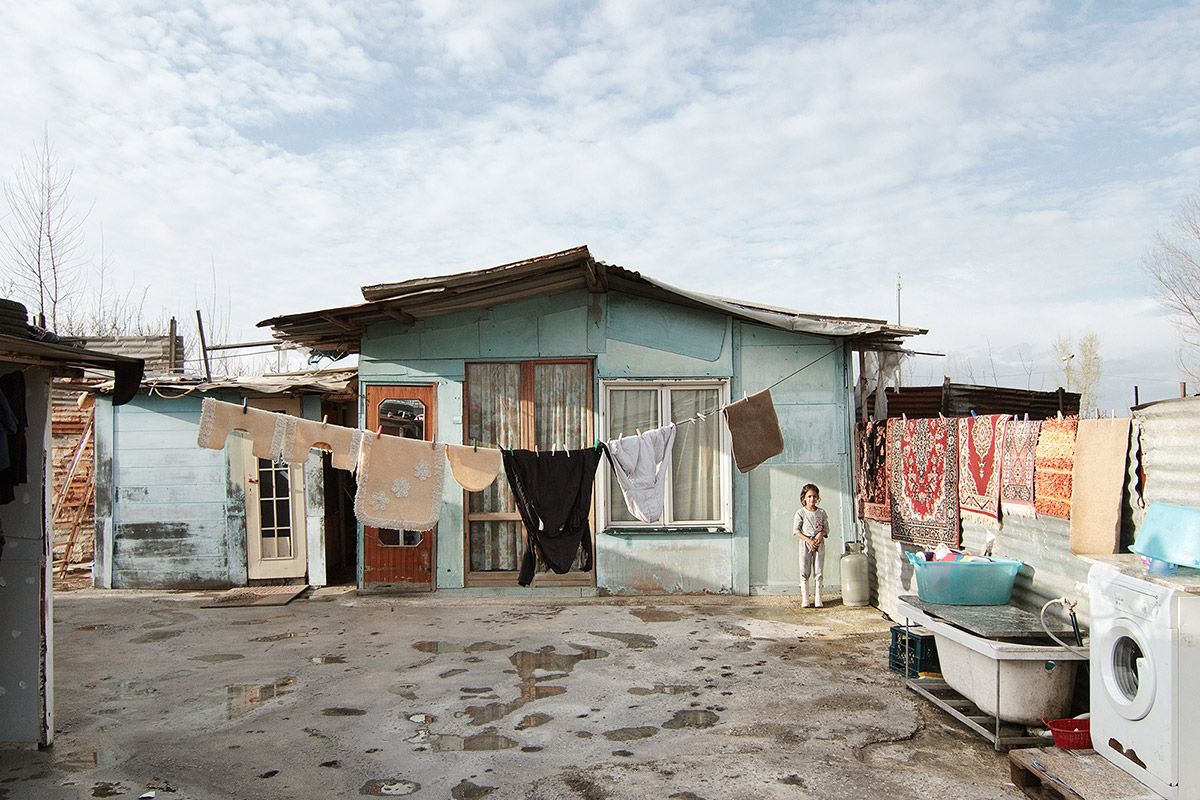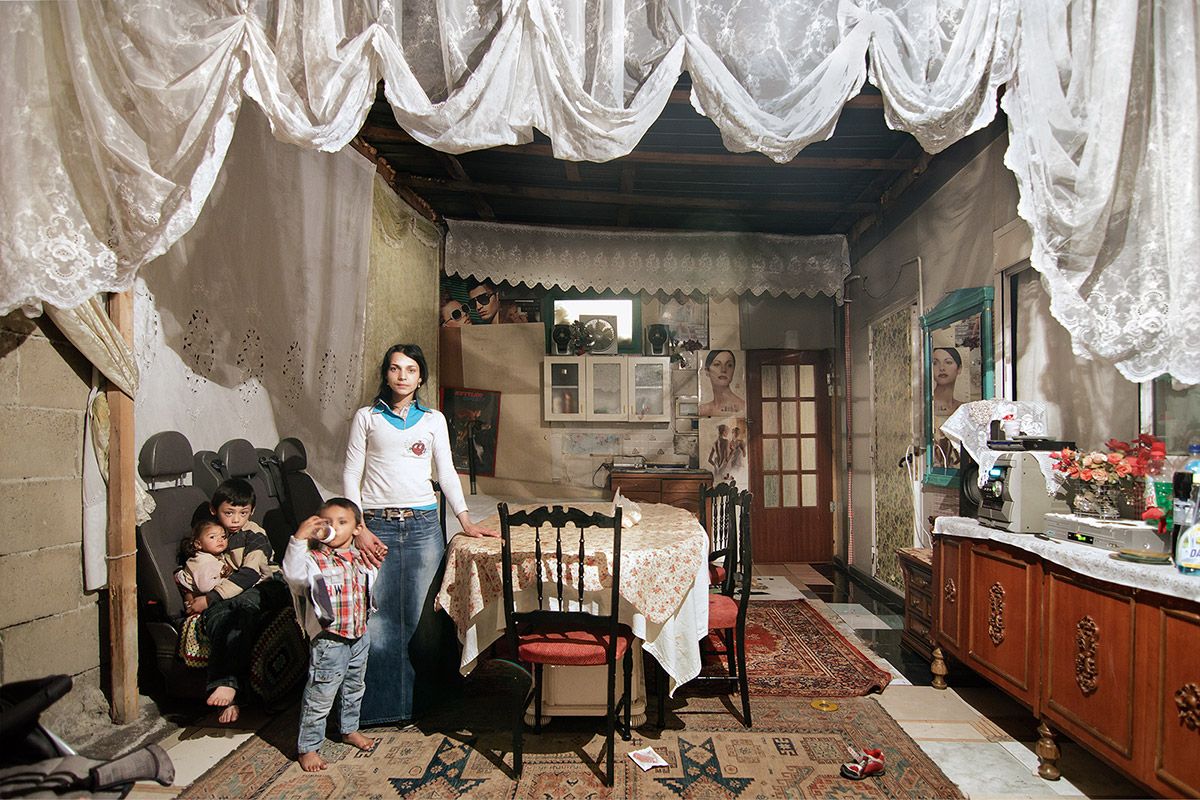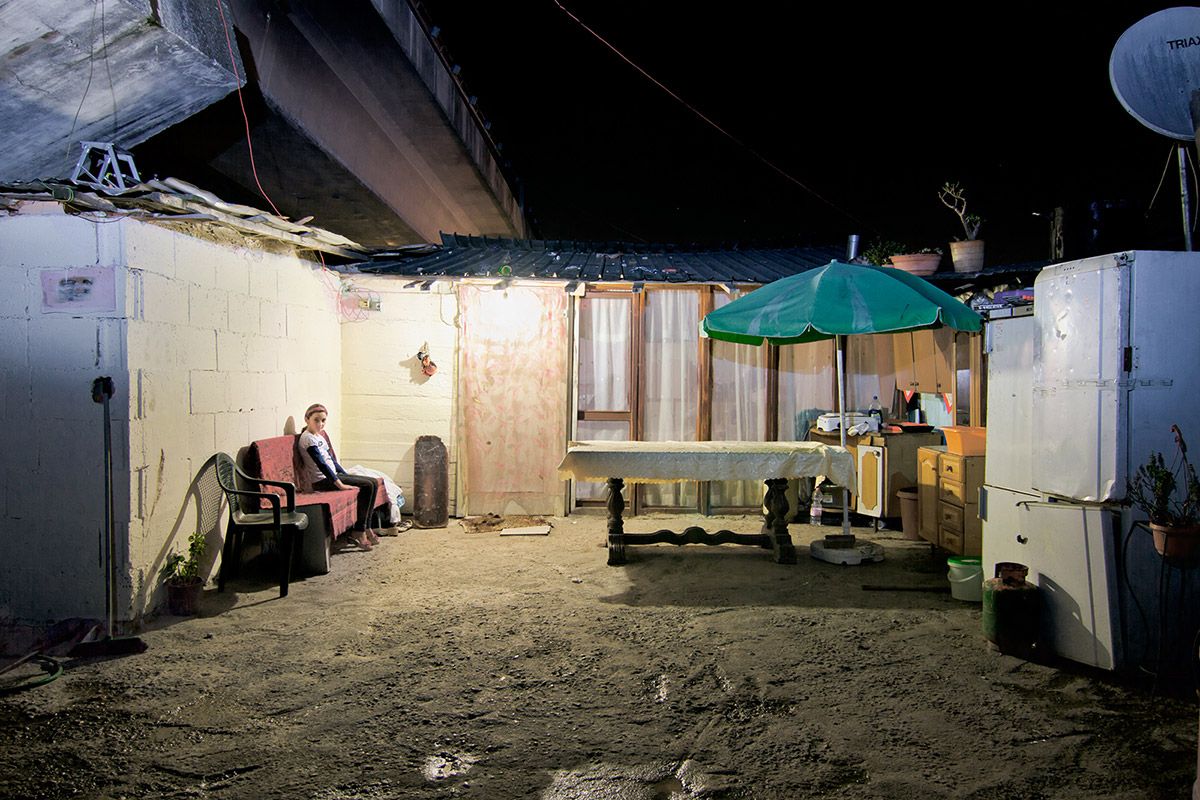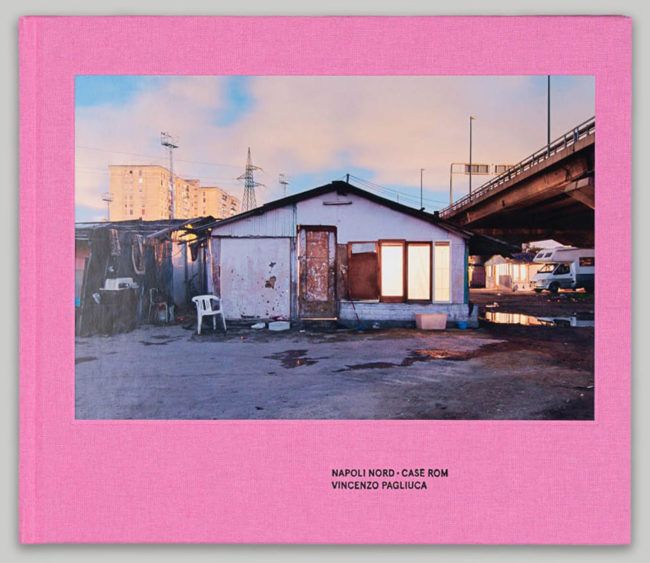blog
Book Review: Napoli Nord / Case Rom by Vincenzo Pagliuca

©Vincenzo Pagliuca
Vincenzo Pagliuca is a 40-year-old documentary photographer from southern Italy. In 2010, after graduating from the University of Naples with a degree in economics, he chose to focus full time on photography.
Pagliuca’s photography focuses on the landscape/architecture relationship and on the relationship between human beings and housing structures. He finds rural and suburban environments as the ideal places for the development of his work.
Napoli Nord / Case Rom is a photographic documentation project set in two Roma camps – Scampia and Secondigliano. They are on the outskirts of Naples, in an area known all over the world for its deterioration and made famous by the film Gomorra, that is based on the Roberto Saviano book with the same title.
In 2013 Pagliuca made a trip to Scampia to deliver photos to some of the families whose children he had previously photographed at the annual carnival parade. On that trip, he was fascinated by the houses which, although built with scap materials, always showed an abundance of color and a great variety of decorative details, in the exteriors as well as in the interiors – rich in decorations of all kinds. The houses were isolated from view by the pillars that supported the overpass. They had been built below street level and were hidden from the sight of those passing by, they evoked an ancestral sense of refuge and protection to Pagliuca.
From 2013 to 2014 Vincenzo went regularly to the Roma camps to develop Napoli Nord / Case Rom.
His approach was slow and contemplative, and while waiting for the ideal light conditions, he spent many hours with the inhabitants of the Roma camp with whom he often shared the photographs he had made.
“In my representation I wanted those environments, so full of visual information, to act as a stage for the female subjects portrayed, showing the complex link existing between the living spaces and the inner world of those women.” – Vincenzo Pagliuca

©Vincenzo Pagliuca
Pagliuca’s interest in the relationship between humans and housing structures led him to reflect on the symbolic and psychological meaning of the house. He sees the house as a metaphysical attractor and container of our inner world, a projection of the Self. According to the theories of CG Jung, the house is structured like our soul, so that the deepest part of the unconscious corresponds to the cellar, while dreams and projections nestle in the attic.
“Warm tones, ochre and yellows are used for the interiors, the private and emotional world, where the space is personalized through carpets, curtains, fake flowers in an attempt to research and strengthen their personal and group identity; but the warmth of these familiar microcosms is extinguished and vanishes in the depiction of gesticeless, rigid, lonely women, with unexpectedly sad children, clinging to their clothes, who challenge easy classification in the abused stereotypes of modern society.” – Vincenzo Pagliuca
The dynamic and chromatic tonality of the characters that populate the photographs of this project, though unintentional, serves the purpose of accentuating the presence of the house and shifts the observer’s attention to it. On a technical level the photographer moves his shots from the internal to the external environments with absolute fluidity and continuity. Sometimes he widens the field of view to include the houses and neighbourhoods in the background of the place where the camp is located, as well as the pillars of the elevated roads that pass around or over the camp. In this approach Vincenzo Pagliuca creates his own photographic dialectic between specific elements and broader views.

©Vincenzo Pagliuca
Napoli Nord / Case Rom combines the technical meticulousness of photographic documentation with social study enriched and integrated by the photographer’s psychological culture. Despite the chance of risking breaking the trust he built, Vincenzo Pagliuca became acquainted with the living conditions of the Roma on the outskirts of Naples, all while documenting the Roma in a detailed manner. For this project, the photographic medium has become an excellent choice: an instrument of knowledge as well as the key to get in touch with an underlying psychological viewpoint which I feel was not easily perceived.

©Vincenzo Pagliuca
Napoli Nord / Case Rom found its home being published by The Velvet Cell. In my opinion, it is a very interesting work that has never before been developed at this level of photographic analysis (for the documentary and technical approach) and psychological (for reflection on the symbolic and psychological value).
The book concludes with a beautiful dissertation by Michele Fucich on the meaning of the latin term “limes” (it can refer to the literal threshold of the house, but it is also originally defined as a path that marked the boundary between plots of land; ‘a liminal space’ in a philosophical and metaphysical sense), which gives further insight to interpreting the work done by Pagliuca.

Napoli Nord / Case Rom
by Vincenzo Pagliuca
Designed by Ricardo Nunes with an essay by Michele Fucich
80 pages, 24 x 21.5 cm,
Hardcover, Clothbound
Published by The Velvet Cell
https://www.thevelvetcell.com/shop/napoli-nord-case-rom/
Location: Online Type: Book Review, Documentary
Events by Location
Post Categories
Tags
- Abstract
- Alternative process
- Architecture
- Artist Talk
- artistic residency
- Biennial
- Black and White
- Book Fair
- Car culture
- Charity
- Childhood
- Children
- Cities
- Collaboration
- Community
- Cyanotype
- Documentary
- Environment
- Event
- Exhibition
- Faith
- Family
- Fashion
- Festival
- Film Review
- Food
- Friendship
- FStop20th
- Gender
- Gun Culture
- Habitat
- Hom
- home
- journal
- Landscapes
- Lecture
- Love
- Masculinity
- Mental Health
- Migration
- Museums
- Music
- Nature
- Night
- nuclear
- p
- photographic residency
- Photomontage
- Plants
- Podcast
- Portraits
- Prairies
- Religion
- River
- Still Life
- Street Photography
- Tourism
- UFO
- Water
- Zine

Leave a Reply